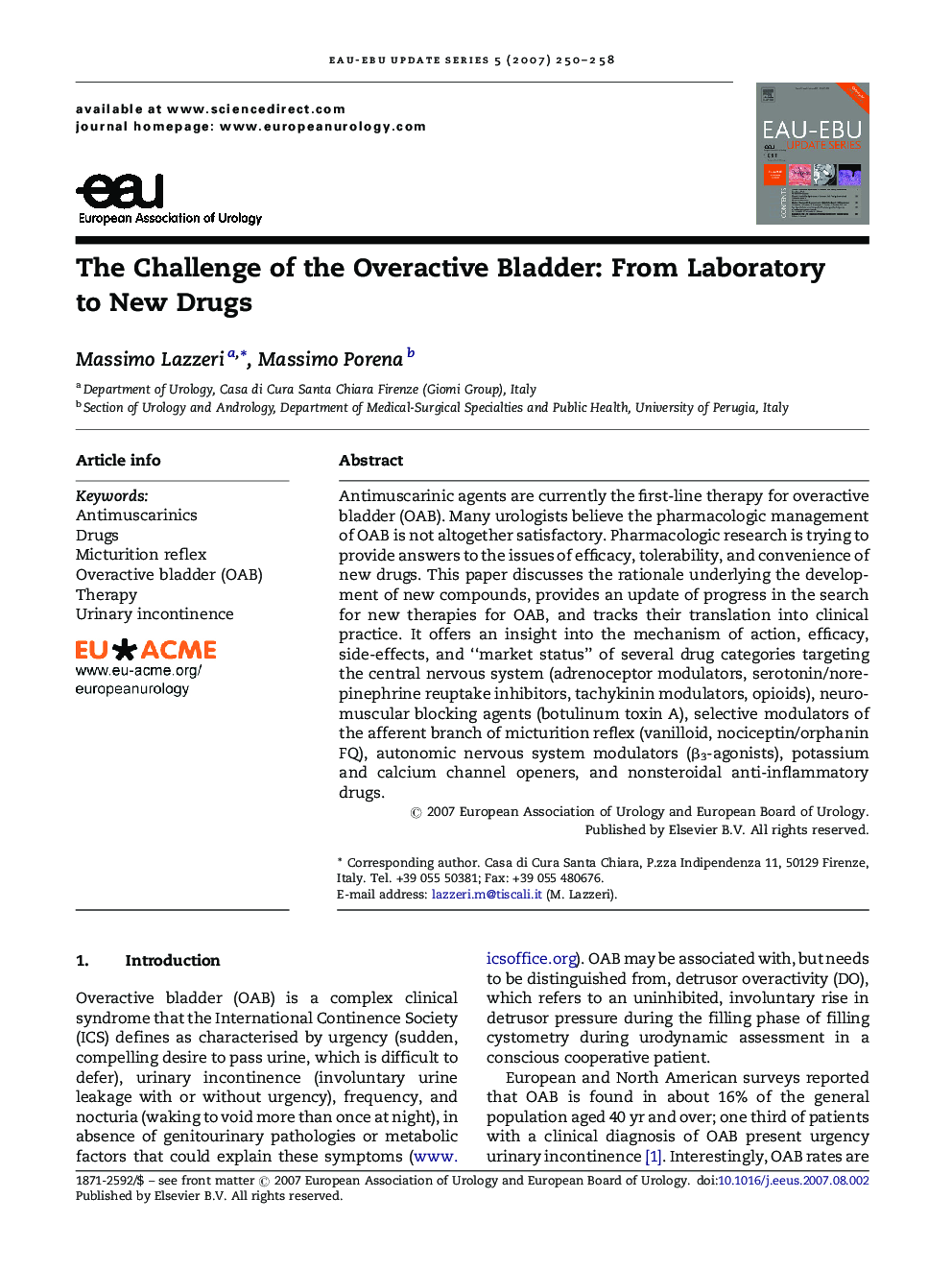| Article ID | Journal | Published Year | Pages | File Type |
|---|---|---|---|---|
| 3918911 | EAU-EBU Update Series | 2007 | 9 Pages |
Antimuscarinic agents are currently the first-line therapy for overactive bladder (OAB). Many urologists believe the pharmacologic management of OAB is not altogether satisfactory. Pharmacologic research is trying to provide answers to the issues of efficacy, tolerability, and convenience of new drugs. This paper discusses the rationale underlying the development of new compounds, provides an update of progress in the search for new therapies for OAB, and tracks their translation into clinical practice. It offers an insight into the mechanism of action, efficacy, side-effects, and “market status” of several drug categories targeting the central nervous system (adrenoceptor modulators, serotonin/norepinephrine reuptake inhibitors, tachykinin modulators, opioids), neuromuscular blocking agents (botulinum toxin A), selective modulators of the afferent branch of micturition reflex (vanilloid, nociceptin/orphanin FQ), autonomic nervous system modulators (β3-agonists), potassium and calcium channel openers, and nonsteroidal anti-inflammatory drugs.
